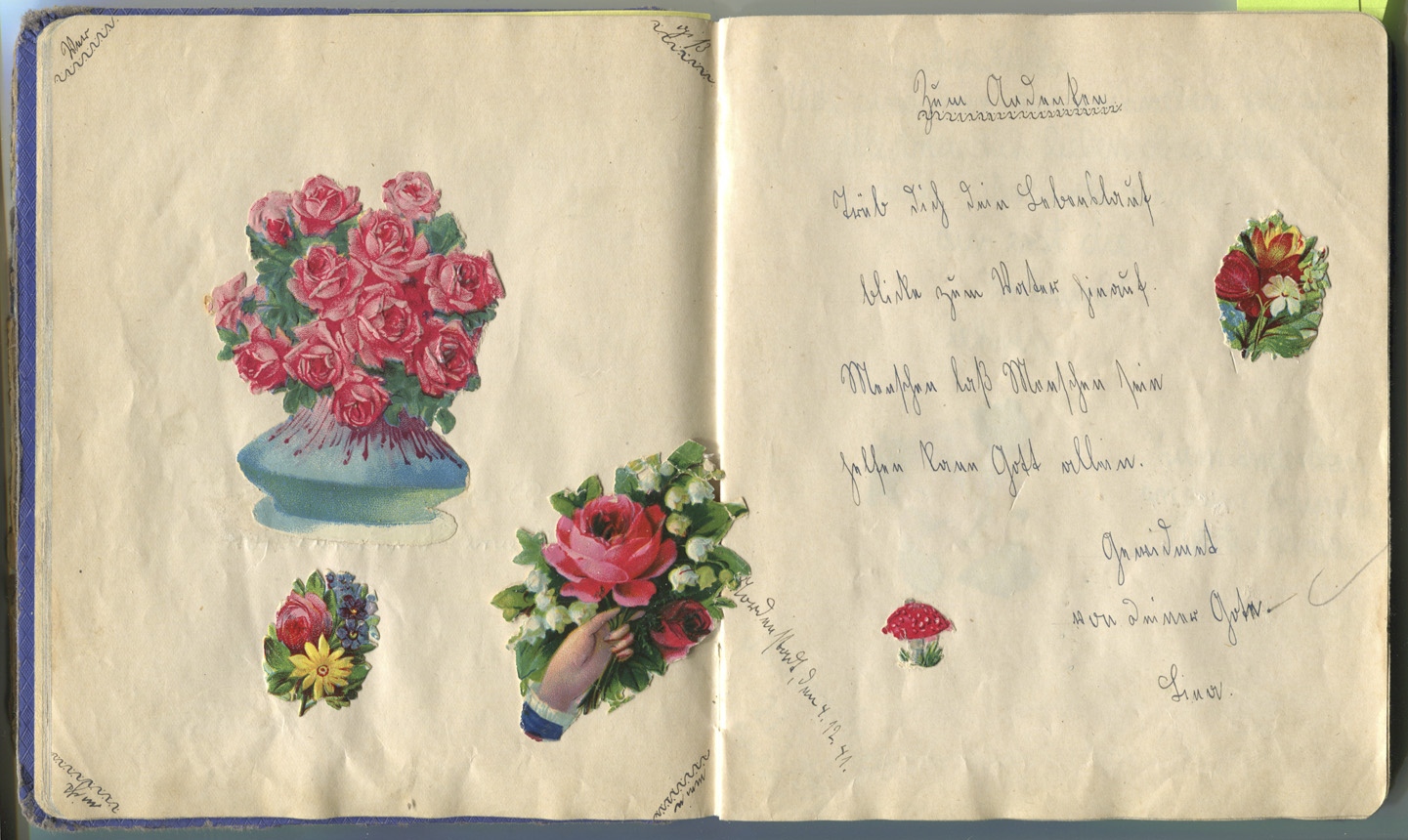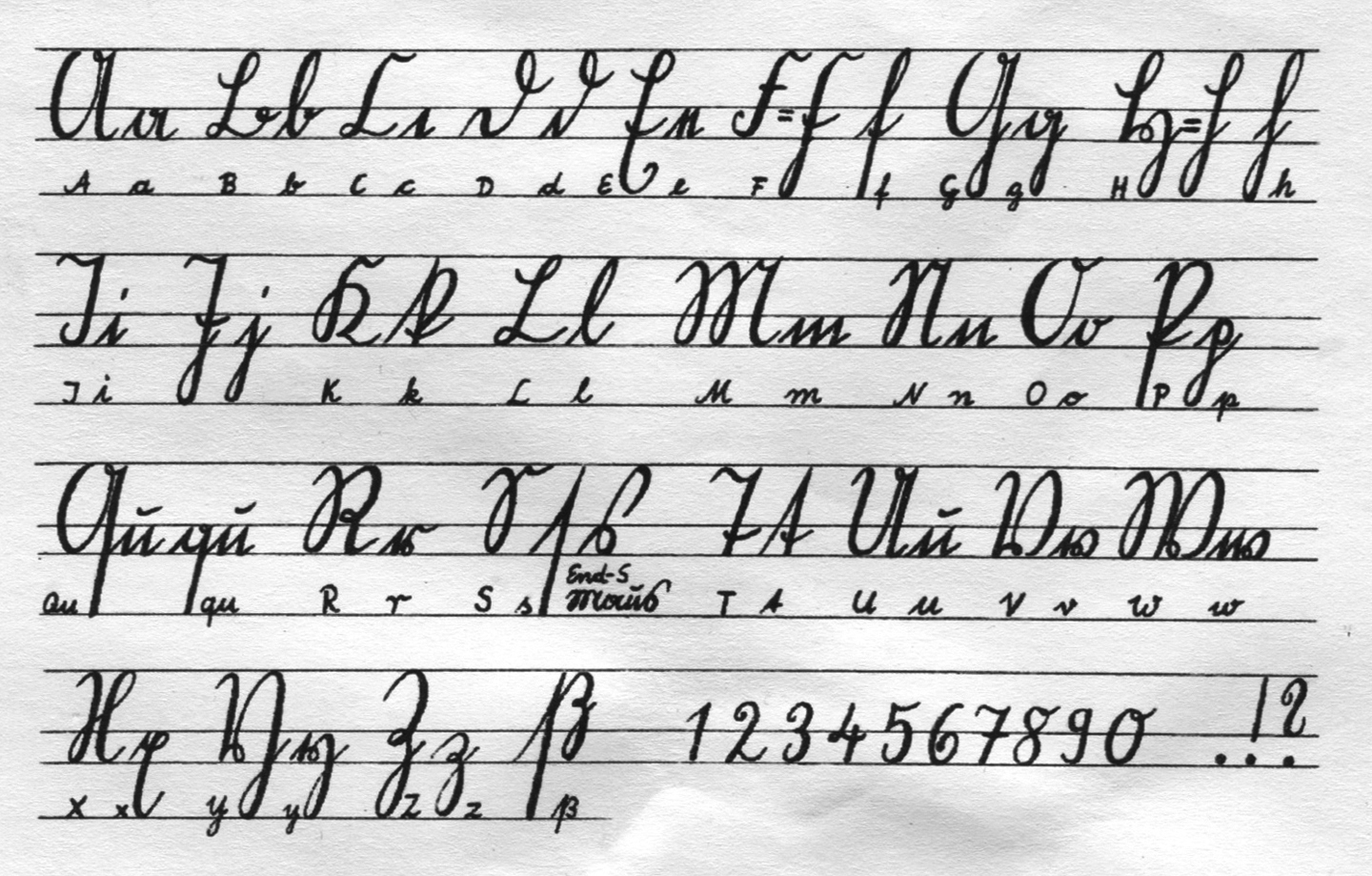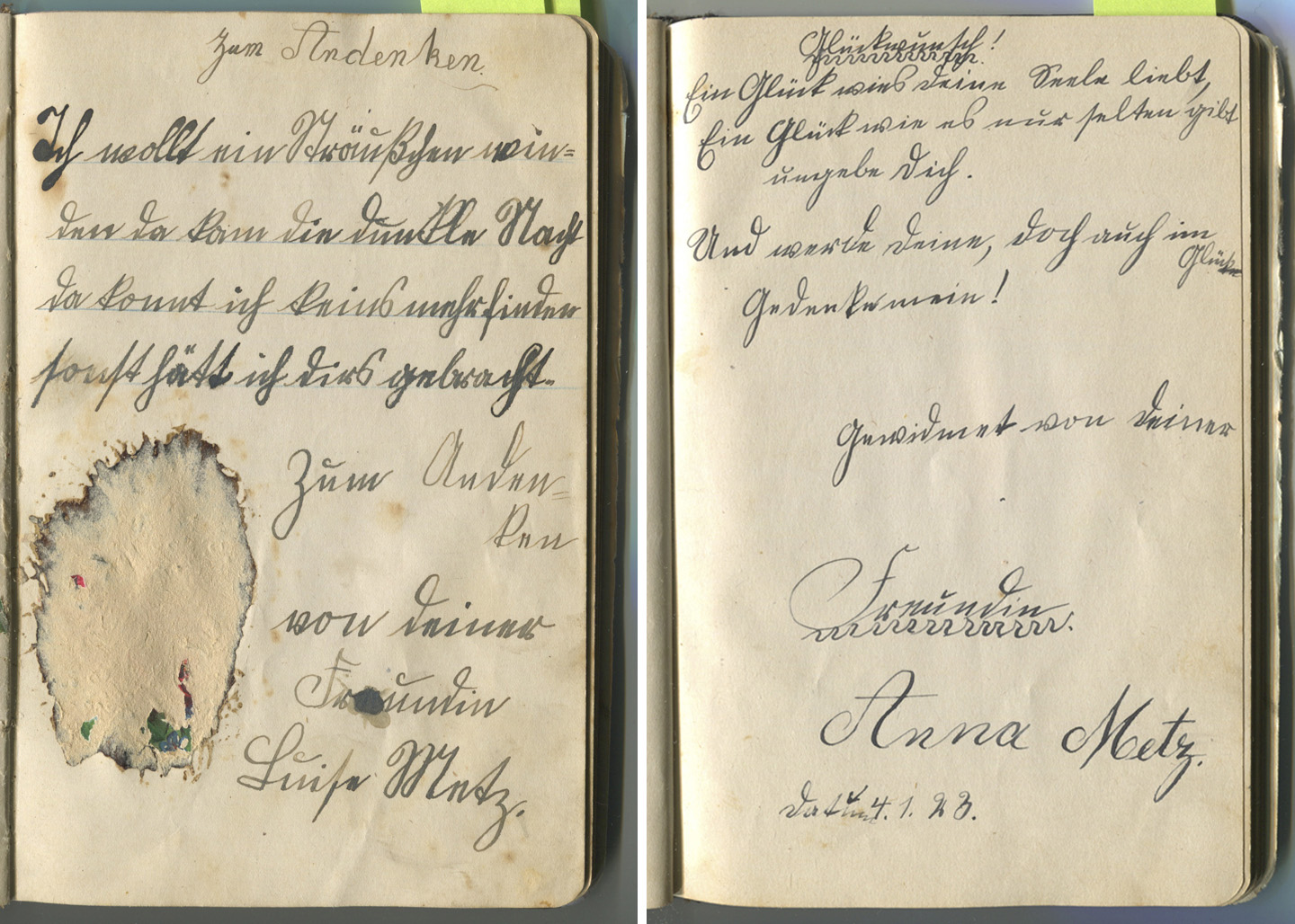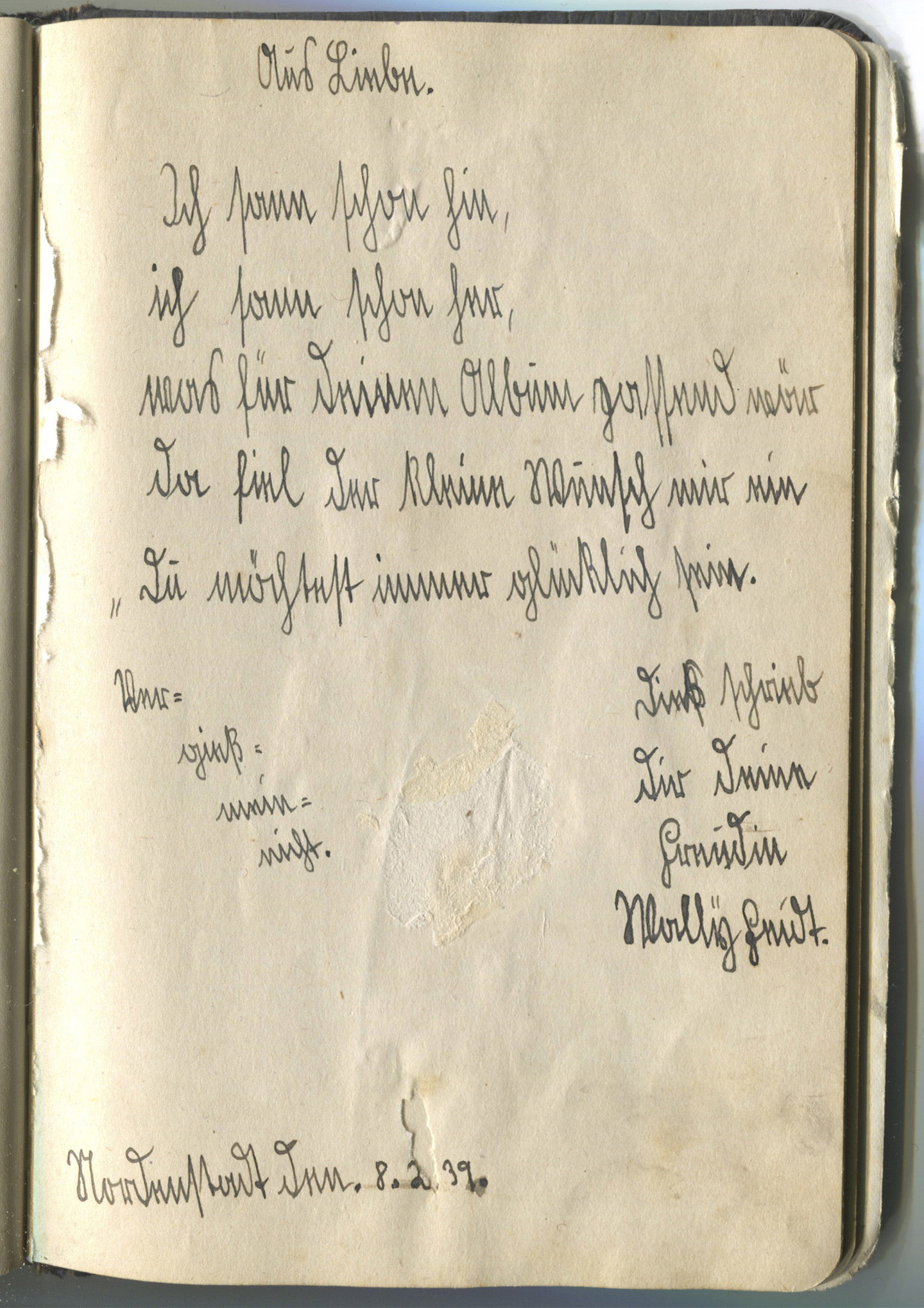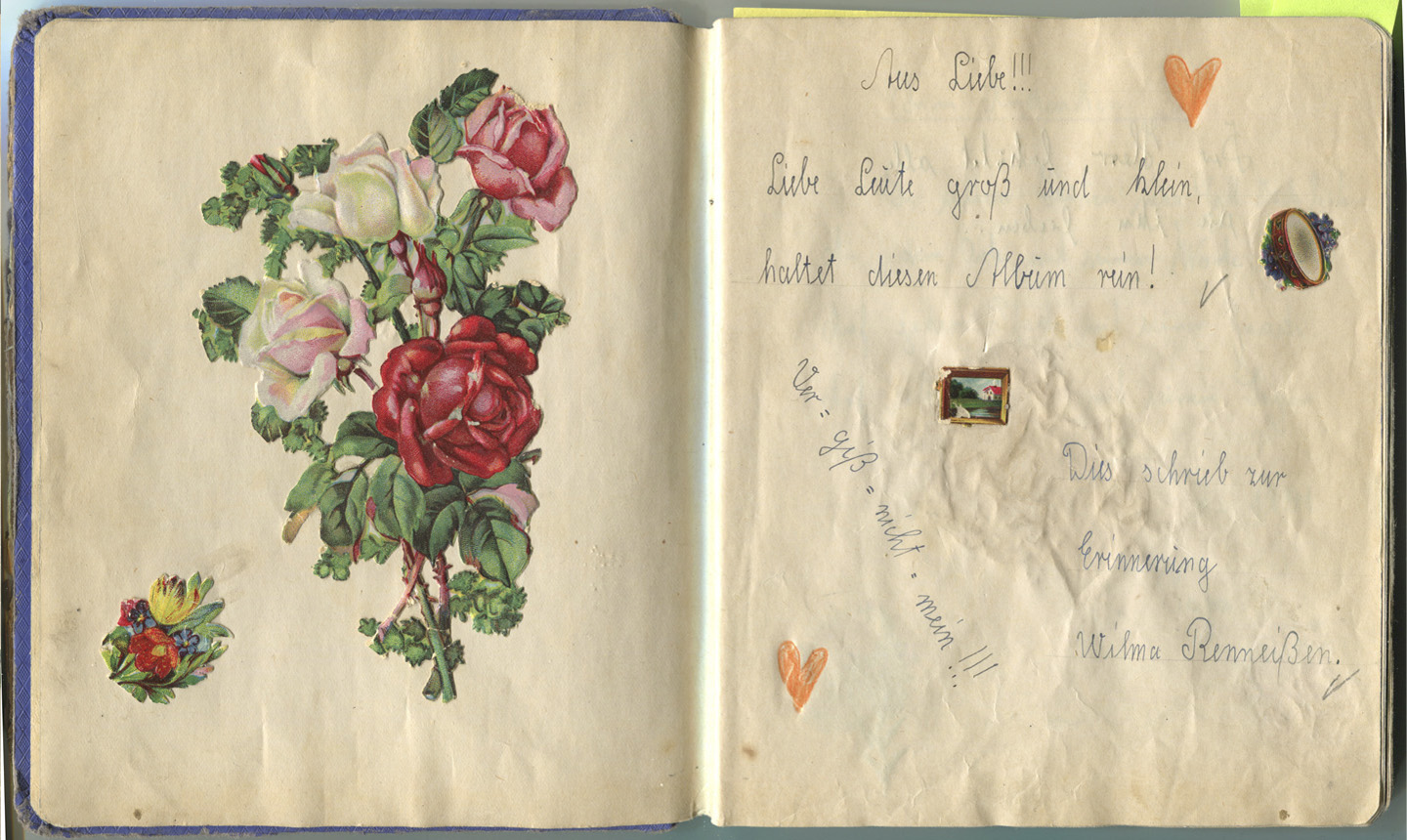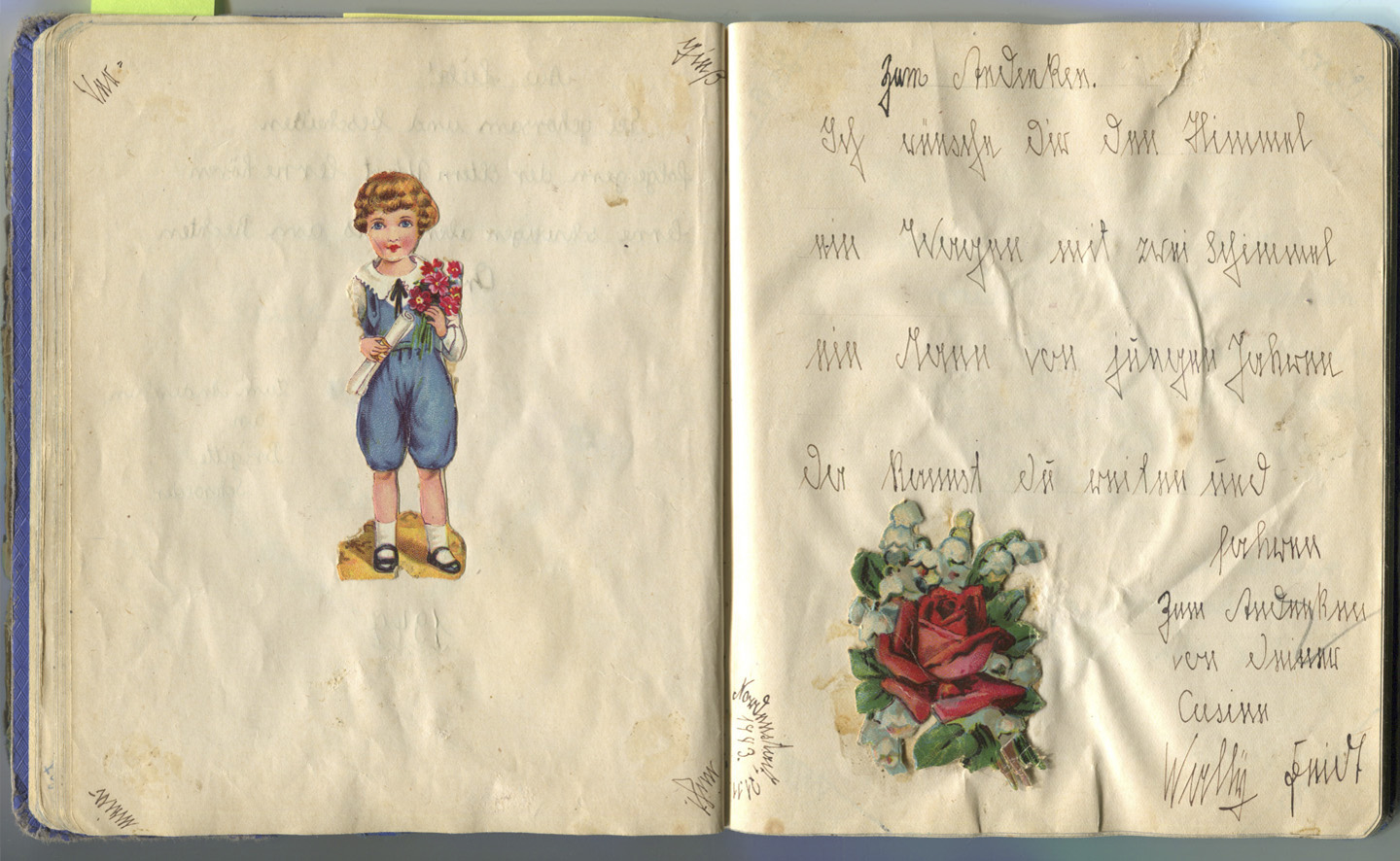This year my mother showed me my grandmother Wilma’s and my great-grandmother Frieda’s friendship books. Both books are filled with poems about friendship, youth and life, little proverbs their little friends wrote to them. Often the pages were adoringly embellished or decorated with prefabricated illustrations of flowers, cute animals and children out of some super-idyllic fantasy world. There are entries from every month in these books, but noticeably many of them in Decembers. The cold months were obviously the time for this sort of thing.
My great-grandmother Frieda’s book has entries from December 1919 to 1939. My grandmother Wilma’s book shows entries from December 1941 to 1947. I am oddly fascinated with these books, because the innocent wishes from 7-to-10-years old children stand in such a crass contrast to the awful and extreme things which also happened at these times.
To see these books was obviously intriguing on a personal level, but also very interesting from a designers/type designers perspective because many entries are written in Sütterlin, an old German handwriting style. Sütterlin is familiar enough to normal Latin handwriting that it makes you think you should be able to read it, but in the end you usually cannot. Some letters are very similar to their modern equivalent, some are completely different.
My great-grandmother Frieda’s book has entries from December 1919 to 1939. My grandmother Wilma’s book shows entries from December 1941 to 1947. I am oddly fascinated with these books, because the innocent wishes from 7-to-10-years old children stand in such a crass contrast to the awful and extreme things which also happened at these times.
To see these books was obviously intriguing on a personal level, but also very interesting from a designers/type designers perspective because many entries are written in Sütterlin, an old German handwriting style. Sütterlin is familiar enough to normal Latin handwriting that it makes you think you should be able to read it, but in the end you usually cannot. Some letters are very similar to their modern equivalent, some are completely different.
